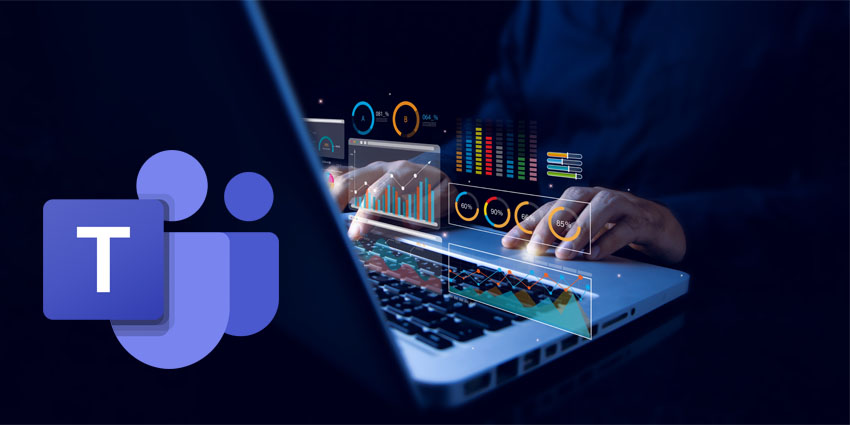In 2024, the UC and collaboration space confronts a daunting wave of cybersecurity challenges requiring energised vigilance and innovative solutions. As businesses adjust to the new normal of hybrid working and increasingly rely on seamless digital interactions, the spectre of evolving threats, from deepfake attacks to sophisticated ransomware, overshadow and endanger the broader digital transformation project.
As malicious technology progresses, so too must our defences. Understanding these challenges is the first step towards securing the integrity and trust necessary for modern communications and collaboration environments.
The Rise of Deepfakes
The escalating threat of deep fake attacks illustrates a significant threat to UC and collaboration. As these platforms and apps hinge on video and audio interactions, the malicious use of deepfake technology could erode trust and integrity within these digital spaces.
The potential consequences are extensive. Deep fakes can manipulate visual and sound elements to fabricate apparently authentic content, making distinguishing genuine communication from manipulated messages, images, audio or video difficult. The technology is so advanced that some deepfakes can even adapt to the users they’re trying to con in real time.
The rise of deep fake attacks introduces a heightened risk of misinformation, impersonation, and corporate espionage to take advantage of remote and hybrid work. The infiltration of deep fakes threatens to undermine the fabric of trust within professional relationships while also acting as a practical tool for manipulating workers into inadvertently leaking sensitive organisational data.
Organisations must invest in robust security measures, such as advanced authentication protocols and real-time content verification, to mitigate the danger of deep fake attacks.
The Growing Sophistication of Ransomware Attacks
Ransomware attacks are getting more and more refined, signalling a significant threat to the seamlessness and security of digital interactions. As these attacks become more sophisticated, their capacity to infiltrate and disrupt UC platforms grows exponentially. Ransomware can paralyse communication channels, compromising the confidentiality and availability of critical information.
In a collaborative context reliant on real-time data exchange, the consequences are enormous. The potential loss of sensitive data, intellectual property, and operational continuity can undermine organisations, potentially culminating in substantial financial and reputational damage.
The interconnected nature of UC and collaboration platforms also fosters even more vulnerabilities, making it problematic to contain and eradicate ransomware infections as quickly as possible.
Organisations must adopt proactive cybersecurity measures, such as robust encryption, regular system audits, and employee training, to reinforce their defences against ever-evolving ransomware threats.
The growing sophistication of these attacks demands a collective effort from the industry and organisational leaders to develop resilient security frameworks that can withstand the ingenuity of bad actors, safeguarding the integrity and functionality of UC ecosystems.
The Double-Edged Sword of AI in Cybersecurity
Integrating AI into cybersecurity presents a double-edged sword, bringing both innovative defence mechanisms and viable threats to the UC space into the fold.
While AI-powered security solutions provide advanced threat detection and response capabilities, the malicious use of AI by bad actors poses a huge risk. AI-driven attacks, such as sophisticated phishing campaigns or automated social engineering, could target vulnerabilities in UC and collaboration platforms, exploiting the same technology that is designed to enhance security.
The adaptability and autonomy of AI systems may allow attackers to launch more dynamic and evasive attacks, potentially bypassing traditional cybersecurity defences. AI’s potential to manipulate or generate the convincing deep fakes outlined above might prompt worries about the authenticity of digital interactions within collaborative environments.
As organisations understandably embrace AI for improved productivity and functionality, they must also address the vulnerabilities it adds. The future of UC and collaboration security hinges on producing AI-powered defences that outpace viable dangers to empower a proactive and resilient cybersecurity system of responses.
The Transformative Power of Quantum Computing — For Good And Ill
Quantum computing could prove as significant a technological development as AI. Quantum computers can enact calculations dramatically faster than classical computers, making them suitable for solving complex problems that humans and their classical computers might either take an exhaustively long time to process or struggle to solve altogether.
It will have a meaningful impact on optimisation, as quantum computers can swiftly solve problems with vast numbers of variables, resulting in positive implications in areas such as supply chain management, drug development and financial modelling.
It will also have a seismic influence over cryptography, for both good and bad, as quantum computers are capable of breaking traditional encryption algorithms.
Their computational power means they can provide more secure alternative technology based on quantum mechanics principles. For example, quantum key distribution (QKD) can create secure communications channels based on these exact principles.
However, quantum computing’s capability to break traditional encryption undermines the security of both the cloud and the internet. Standard, asymmetric encrypted messaging, file sharing and email, such as those provided by products like WhatsApp and Google‘s Gmail, could be at risk of exposure. Malicious actors always exploit unencrypted data, but quantum computing could also be the key that unlocks their access to asymmetrically encrypted data.
Thorough Cybersecurity Training and Adoption
Ransomware, deep fakes, AI, quantum computing. All of these dangers can be mitigated by a concerted driving of cybersecurity training and adoption — but that represents a challenge in and of itself.
As the digital transformation progresses and hybrid working evolves, ensuring that users are well-versed in security best practices becomes critical. The human element remains fundamental, with employees often serving as the first line of defence against cyber threats.
Navigating the intricacies of secure communication protocols, recognising phishing attempts, and adhering to robust authentication processes require comprehensive training initiatives. The evolution of UC tools necessitates ongoing education to keep users in the know about the latest cybersecurity measures.
The challenge is that these training measures must include all the critical, and often incredibly complex, information while still being conveyed to workers in an engaging and palatable manner so that they can transfer their training to real-life scenarios.
Adoption challenges also arise as organisations integrate new technologies, with resistance or lack of awareness potentially exposing vulnerabilities. Clear communication and user-friendly interfaces should accompany these technologies to produce a culture of cybersecurity awareness. Intuitive training and processes and an engrained recognition that employees hail from different backgrounds and age groups are essential for ensuring the universal adoption of cybersecurity practices.
Driving a proactive cybersecurity mindset through practical training and seamless adoption strategies is instrumental in fortifying UC and collaboration platforms. The end result should be that every single employee is not only aware of potential threats but also empowered to actively contribute to the business’s cybersecurity resilience.







